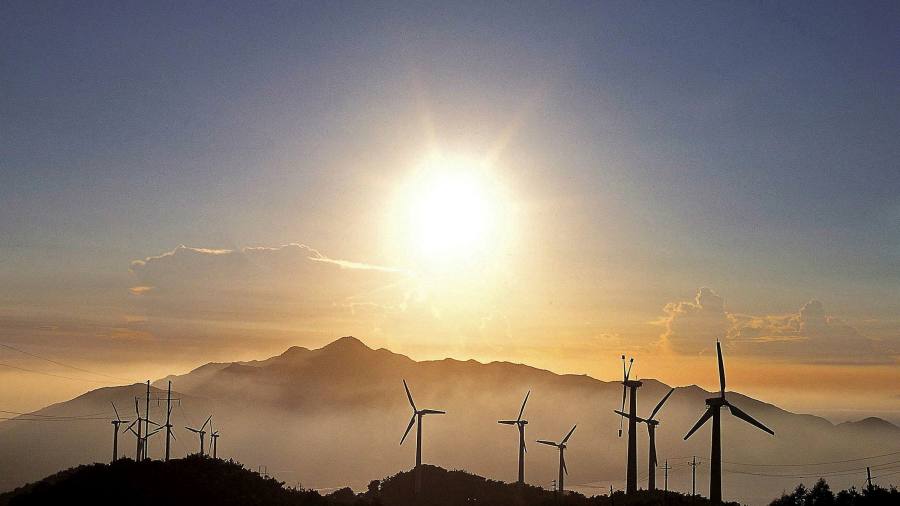[ad_1]
Record wind power installations in 2020 have secured China’s position at the top of the global industry despite waning subsidies from Beijing.
The 52 gigawatts of new wind power added last year doubled the capacity China installed in 2019, according to a report released on Thursday by the Global Wind Energy Council, a Belgium-based international trade association.
China’s surge in installations was in part driven by 2020 being the final chance for companies to take advantage of central government subsidies and favourable prices for onshore wind farms.
The Chinese wind market exceeded the council’s forecasts by more than 70 per cent, elevating wind-generated power in China above the combined total for Europe, Africa, the Middle East and Latin America.
That surge meant that east Asia accounted for about three-fifths of global installations, up from about 50 per cent last year.
Although China accounts for about 94 per cent of installations in the region, Australia, Japan, Kazakhstan and Sri Lanka also had record years. An outlier was India, which installed the lowest level of wind capacity since 2004 owing to regulatory hurdles. North and Latin America installed 22 gigawatts, nearly 17 of which was in the US.
Liang Wanliang, a China director for GWEC, said Beijing’s policy support for renewables had led the association to revise forecasts of a significant drop in installations this year. Instead, he expected only a slight decrease in installations to a level still above 40 gigawatts.
Top-down policies requiring wind and solar be integrated into the power grid, rather than subsidy support, would probably drive greater transition to renewables, Liang said. “It’s now the grid companies which need to find a solution in order to take more renewables,†he added.
Xi Jinping, China’s president, on Monday told a meeting of senior Communist party officials that the economy needed a “new kind of electrical system centred around new energyâ€, an announcement interpreted by analysts as a signal of continued strong policy support for renewables.
After subsidies for wind and solar resulted in a deficit of Rmb250bn in China’s renewable-energy fund by the end of 2019, Beijing has pushed for sustainable power sources to compete at cost with polluting coal power, the country’s primary energy source.
Ending a reliance on coal remains China’s main obstacle to its goal of reaching peak carbon dioxide emissions by 2030 and achieving net-zero emissions by 2060, which was announced unexpectedly by Xi last September.
The announcement sparked optimism for a breakthrough in global climate negotiations but international observers are still awaiting details of how Beijing plans to overhaul its economy to embrace sustainable growth.
A much-anticipated five-year economic blueprint passed by China’s rubber-stamp parliament this month underwhelmed environmentalists who had hoped for strict curbs on coal power. China built three times more thermal plants in 2020 than the rest of the world combined.
GWEC estimates that China needs to install more than 50 gigawatts of wind power capacity per year from 2021 until 2025 and 60 gigawatts from 2026 onwards to reach its 2060 net-zero goal.
Climate Capital

Where climate change meets business, markets and politics. Explore the FT’s coverage hereÂ
[ad_2]
Source link





